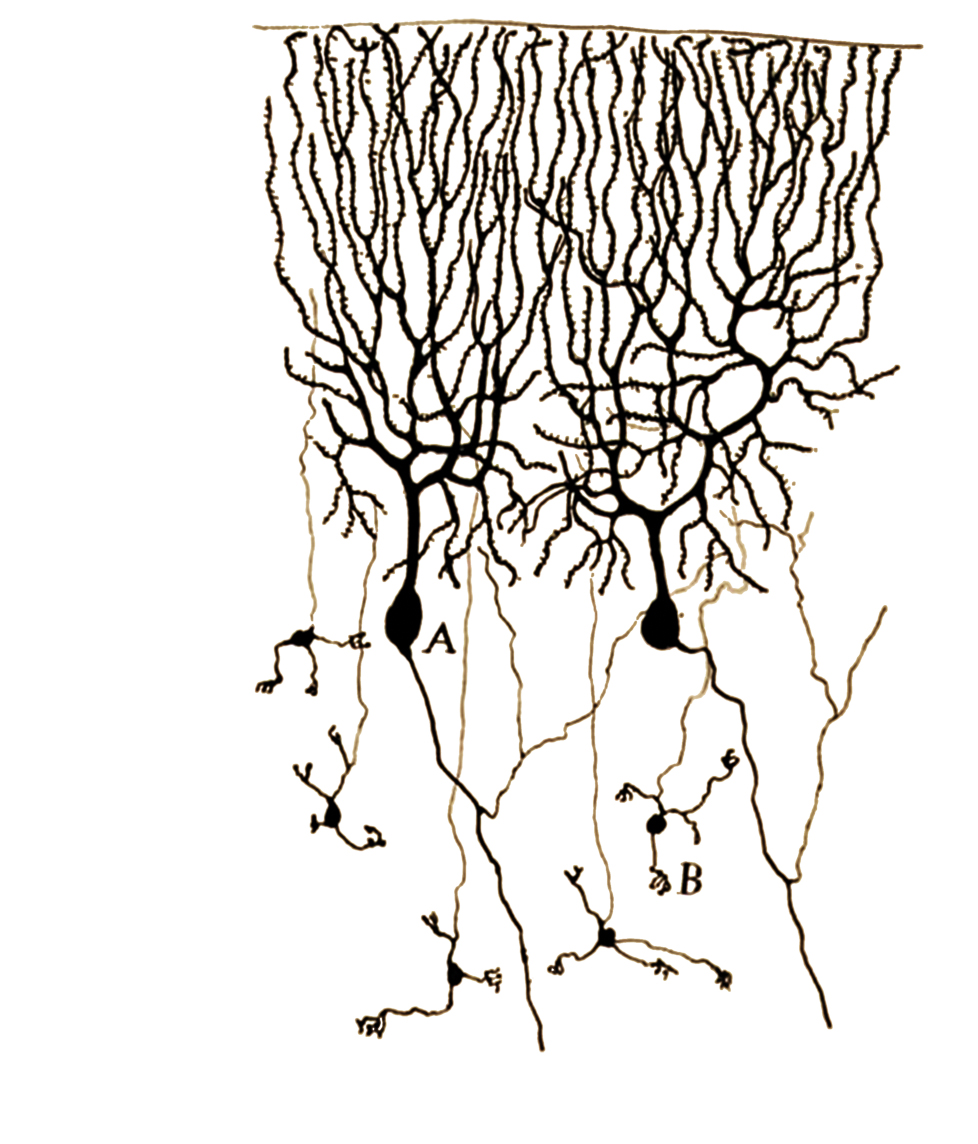Professor, for me, this day is a new tissue stain,
like the ones you coveted for your microscopy,
and like the one your rival, Golgi,
said you stole from him, the silver stain
that can distinguish nerves from other cells
and one kind of nerve from another.
This day stains these elms, oaks, sycamores
and maples along my customary walk.
Some leaves have fallen. Walnuts roll
beneath my boots. Pale trunks rise gaunt,
bent against the wind. Skeletal refugees
who trudge and trek along the ridge.
Some will endure.
You, of all people, would require
that form serve function
and would say that function demand form.
To some, the trees in shape resemble peasants
leaning forward, working fields long after the lord
has gone to a doxy-warmed and brocaded bed.
To others, they recall the Burghers of Calais,
spines straight, struggling for dignity as they clutch
robes, caps, or the signs of their offices,
awaiting the pleasure of their executioner.
Yet, knowing only the shapes
of nerves as you have shown us,
we cannot explain how we see or hear.
And no understanding of the connections
between nerves has yet explained
why we love or pray.
You have left mysteries enough for us.
We must start with what you have left us to see.
To me, by the light of this day,
the elms are shaped like neurons
revealed by your stain.
They distribute in arrays
as in the arbor vitae (a fitting name)
of the cerebellum and in other
well-ordered geometries of like neurons.
You, even in your atherosclerosis,
would have apprehended at once
how changing winds, competition for the sun,
position along the incline,
the intent of the arborist, lightning,
rain, blight, composition of the soil,
and the scurrying of maddened squirrels
had so altered the shape, height, bark,
and line of these swaying trees
from their archetypes
and from their idealized arrays.
These trees persevere, sensing,
adapting to, and transforming themselves
and the forces that play on them.
They plunge roots into the earth;
taste, move, and renew the soil.
Their leaves and blossoms seek light.
They dance stately pavanes to the turns of the seasons,
bear fruit, give shade, share life.
Because of the recollection
of your stains
and of your conceptions
and because of the power
of the stains of this day,
reaching
with their tongues and fingers
and with the agency of these elms
as nerves,
for the first time.
I taste the wind and touch the sun.
Louis Girón is a recovering neurologist and former battalion surgeon who came to poetry late, after a complete poem dropped into a research proposal.
